The Berkshires Bowling Alley that Inspired "The Big Lebowski"
It’s been 36 years since the release of The Big Lebowski, the irreverent cult comedy by Joel and Ethan


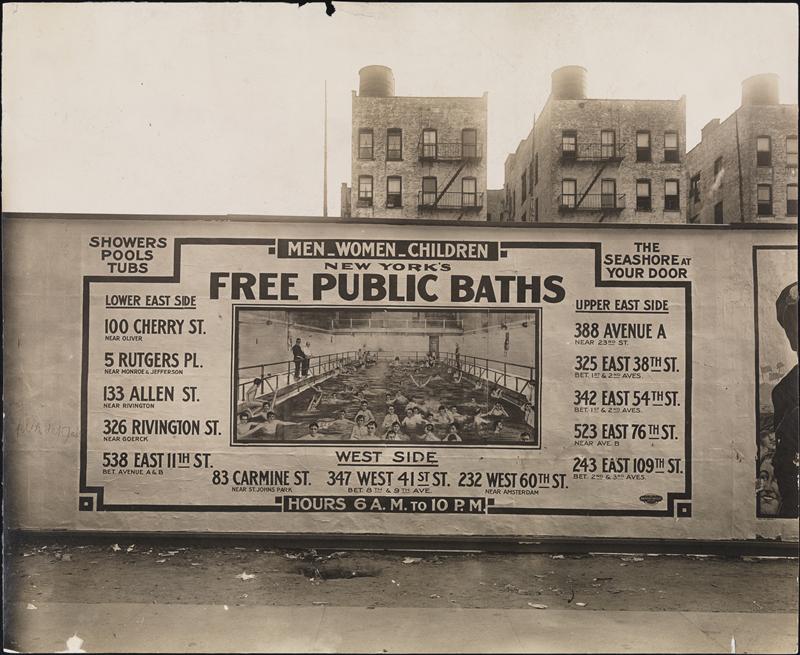
Advertisement for New York City’s free public baths, circa 1935. Image via Museum of the City of New York.
During the mid-to-late 19th century, public health and sanitation in New York City had become a growing concern. By this time, the city’s burgeoning population had reached 1.4 million, leaving many residents without access to adequate sanitation facilities like toilets and bathrooms. In fact, at one point, there was roughly one bathtub for every 79 families in the Lower East Side, according to one 1896 survey. Commercial bathhouses were available throughout the city, but were out of reach for New York’s low income families, especially immigrants who lived in overcrowded tenements that facilitated the spread of diseases like cholera and typhoid.
To help combat the city’s public health problem, public bathhouses were constructed around New York City. The first one opened on Mott Street in 1851. However, it wasn’t until 1901 that the first year-round public bathhouse opened on Rivington Street, years after the New York Senate passed a law in April 1895 requiring the construction of free public baths in cities of 50,000 people or more. Prior to this, temporary floating baths along the river served this need, but pollution soon made them unusable.
The city’s public baths grew in popularity, making sanitation facilities accessible to any of New York’s inhabitants. Eventually, there were twenty public baths located throughout the city. Below are vintage photos of a few well-known ones:
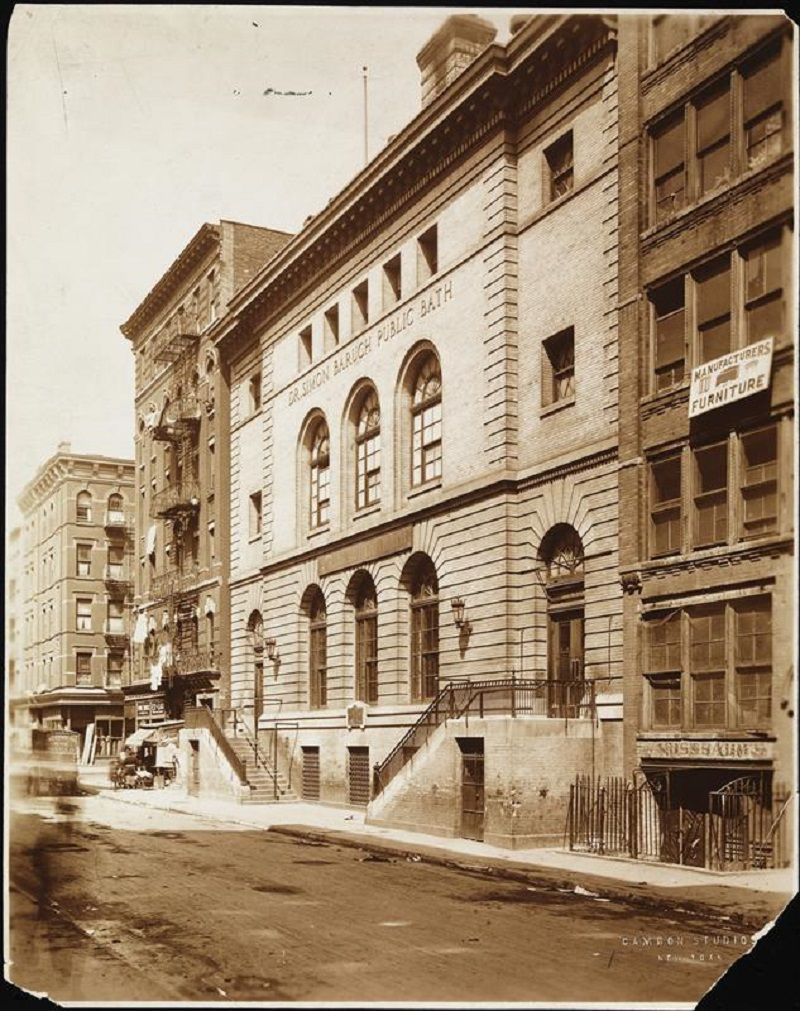
The Dr. Simon Baruch public bathhouse, then known as the Rivington Street Public Baths, opened in 1901 as the city’s first year-round public bath. The bathhouse was renovated with better facilities in 1939 after the surrounding land was donated to the city and the Parks and Recreation Department took jurisdiction. Like others throughout the city, the Baruch Public Bathhouse was closed in the 1970’s when New York City suffered a financial crisis. The building remains standing today, located within a New York City Housing Authority complex, and remains inaccessible to the public and the surrounding community. Image via The Museum of the City of New York, via 1917.
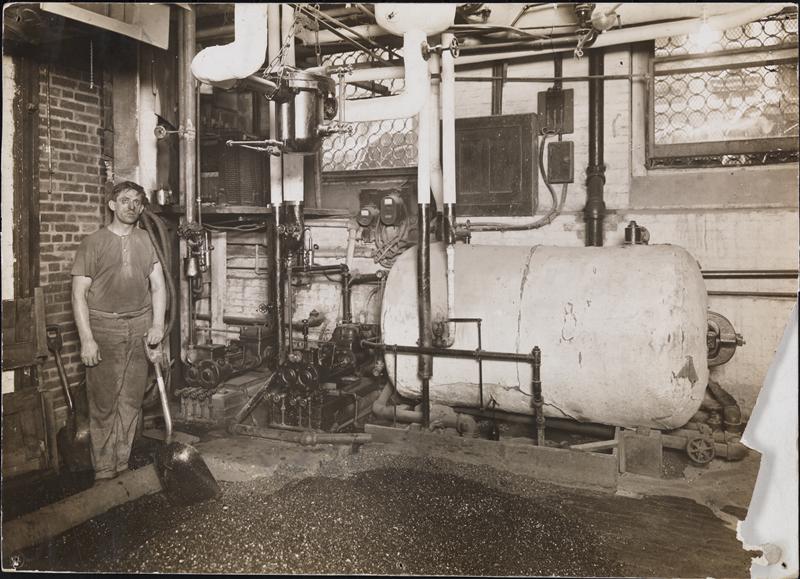
A worker in the basement of the first year-round public bathhouse in New York City on Rivington Street. Image via The Museum of the CIty of New York, circa 1910.
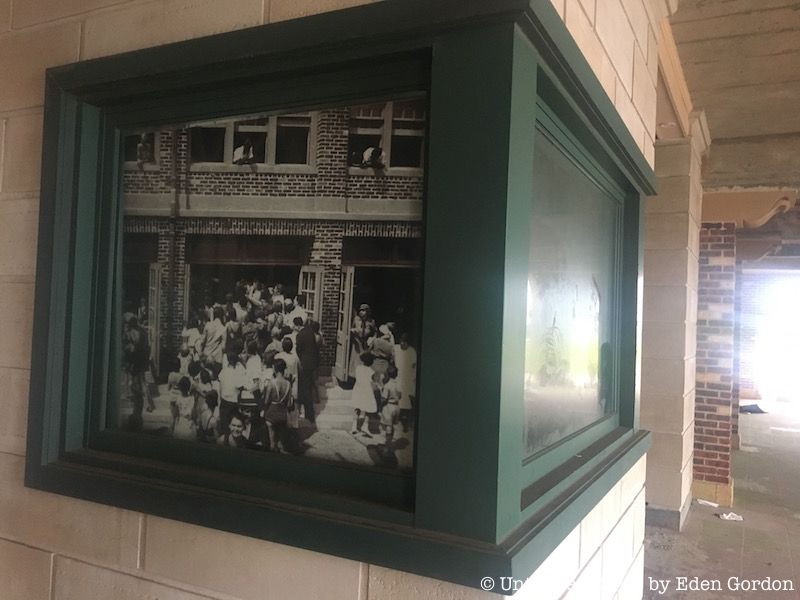
Vintage photographs of The Rockaway’s Art Deco bathhouse in Queens are placed in the now abandoned building.
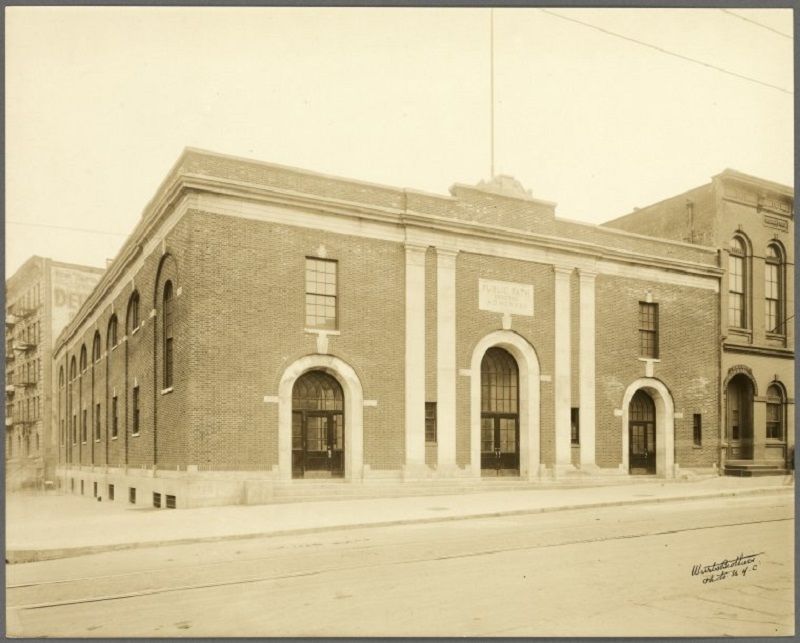
The public bathhouse in Greenpoint on the corner of Metropolitan Avenue and Bedford Avenue was constructed in 1922 on the lot where an old Civil War armory once stood. Although the bathhouse is no longer operational, the building still stands today as Metropolitan Pool. Image via New York Public Library Digital Collections.
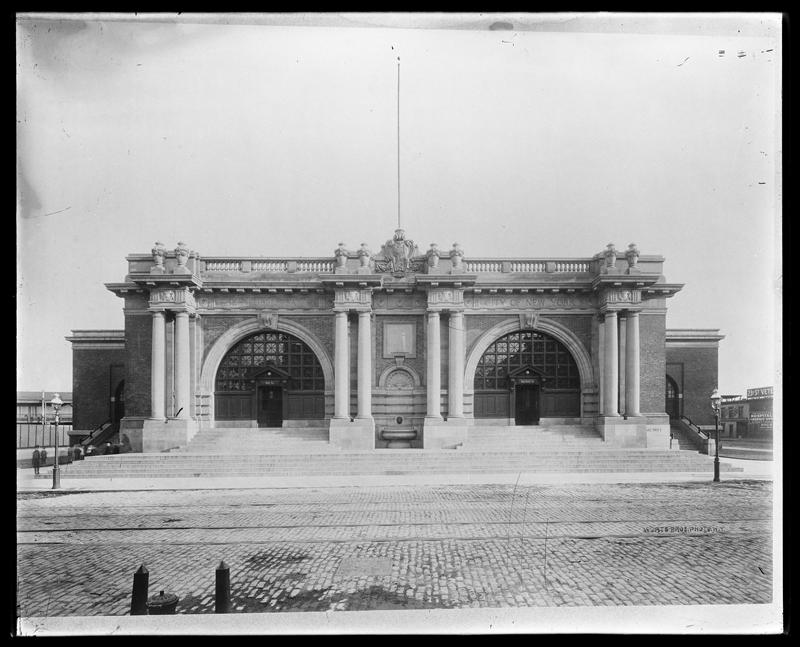
The Asser Levy public bathhouses on East 23rd Street, some of the most famous in New York city, opened in 1908 and were designed to replicate the ancient Roman baths with its Neo-Roman architecture. It was initially built primarily for the Irish immigrants of the “Gashouse District.” The building, now housing two swimming pools, is a designated New York City Landmark and was placed on the National Register of Historic Places in 1980. Image via The Museum of the City of New York, circa 1915.
The bathhouses remained operational throughout World War II, after being renovated during the 1930’s, but most began to close after the war due to the increase of in-home baths.
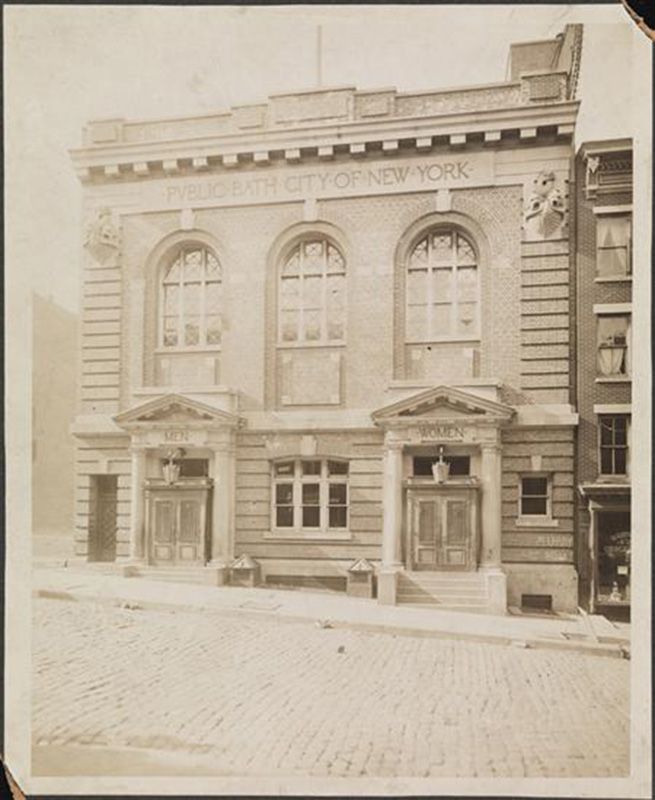
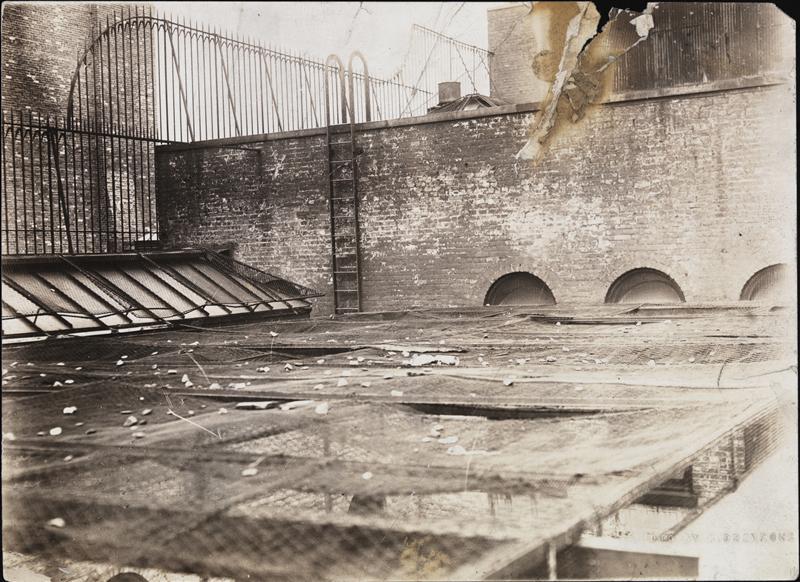
The public bathhouse at West 60th Street opened in 1906, and provided the neighboring villages with 49 showers for men and 20 showers and a tub for women. Images via The Museum of the City of New York, circa 1913.
The Allen Street Bath was the last remaining public bathhouse until it closed during New York City’s financial crisis in the 1970’s. Today, it houses the Church of Grace to Fujianese, a Chinese congregation in the Lower East Side. Likewise, many of the buildings that once held public bathhouses are still standing, but are either abandoned or being repurposed for other uses.
Next, check out Inside the Rockaway’s Abandoned Art Deco Bathhouse in Queens, NYC or Vintage NYC Photos: The Gas House District That Became Stuy Town. Get in touch with the author on Instagram @mjohnathonrich.
Subscribe to our newsletter